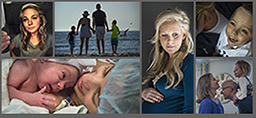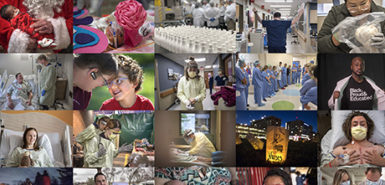
Can’t handle the heat?
No wonder. This week brings us sizzling 90-plus temperatures and humidity that drapes the air like a wet blanket. That brings the heat index―the measure of how hot it feels―close to 100 degrees.
Now is a good time to learn about the risks of heat-related illnesses and how to prevent them, said James Schweigert, MD, the medical director of the Spectrum Health Emergency Department.
When the temperature gets around 90 degrees or above, it’s common to see patients in the emergency department with heat exhaustion. Patients show up suffering from generalized weakness, dizziness, fatigue and cramps. And many don’t connect their symptoms with the heat.
In rare cases, he sees patients who suffer from heatstroke―a more serious, and potentially deadly condition. Heatstroke can be divided into exertional and non-exertional. Those who work or exercise outdoors are most at risk of exertional heatstroke.
On brutally hot days, Dr. Schweigert worries about young athletes, construction workers and landscapers―especially those new to the job or in their first days of practice―who are unwilling to admit when they need a break.

“They have a tendency to want to push through their fatigue and weakness,” he said. “They want to toughen up and keep going. That can lead to fatal consequences.”
On average, 600 people die each year in the U.S. from complications of extreme heat, according to the Centers for Disease Control and Prevention.
In Michigan, residents can blame both the cool climate and the hot weather spikes for their heat woes.
“One of the challenges of heat illness in Michigan is that we don’t consistently have the heat, so we don’t acclimatize to it,” Dr. Schweigert said. “There are not as many super-hot days, so when we get them, we are at higher risk.”
Lots of time in a steamy climate causes a body to adapt. People start to sweat earlier and more profusely to adjust their body temperature. There is less salt in the sweat. Blood flow to the skin increases, and plasma volume expands to allow more cooling.
Even without those adaptations, there are steps people can take to avoid heat-related illness.
Dr. Schweigert shared these tips:
Timing
“If you are going to be out exercising, try to do it before the heat of the day or after the heat of the day,” he said.
Make sure to drink plenty of fluid and take frequent breaks if the heat index is above 90 degrees.
Special risks
Dr. Schweigert advises keeping an eye out for infants and the elderly and to help them get to air-conditioned places on hot days, because these individuals are at risk for non-exertional heatstroke. They also may lack the ability to communicate their symptoms or be mobile enough to get help on their own.
Some medications for high blood pressure, cardiac conditions and mental illness also can put patients at greater risk of dehydration.
Get help
Those who show signs of heat exhaustion―nausea, weakness and dizziness―should get cooled down quickly. Cold water immersion brings down the temperature fastest. Other cooling options are a spray mist bottle and fan or cold, wet towels.
They also should drink water and salt-containing drinks.
And get them to the emergency department if they show signs of heatstroke―a high body temperature, skin that is hot and red, a rapid pulse and mental confusion or unconsciousness.
“If an individual gets to the point where they have any confusion at all or the sweating stops, that’s a game changer,” Dr. Schweigert said. “It really changes it to an emergency situation.”
 /a>
/a>
 /a>
/a>
 /a>
/a>